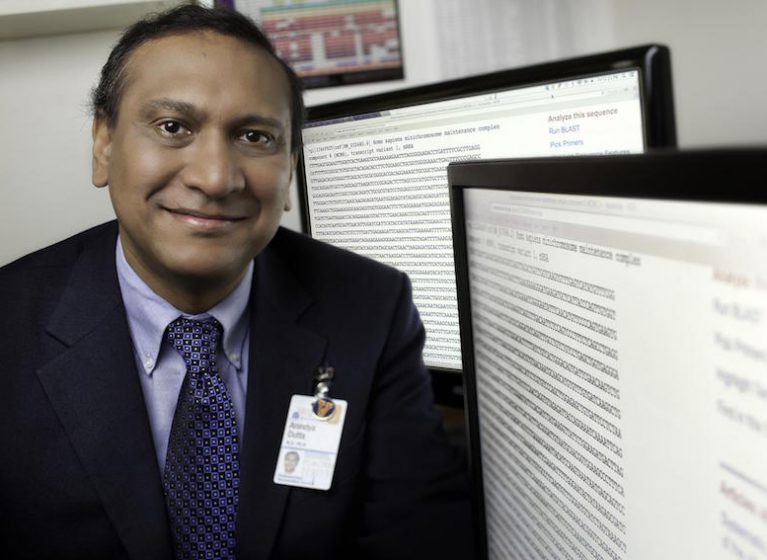Our Anindya Dutta, MD, PhD, has made an important discovery suggesting that 10 percent to 15 percent of prostate cancer and lymphomas have a genetic weakness that makes them particularly vulnerable to chemotherapy and radiation therapy. That should be very good news for patients with that subset of cancers. But his finding also sheds important light on how our cells repair damaged DNA, the blueprint of life. Let’s learn a little more about that.
First of all, why would our cells need to repair our DNA? Double-strand breaks in our DNA are actually tremendously common in our cells, resulting both from normal stresses and outside factors such as smoking and excessive sunlight. Once DNA is broken, cells have two options for repair, Dr. Dutta tells me: They can do a quick-and-dirty repair – basically sticking the two ends of the strand together – which can result in unintentional gene deletions. Or they can take a more methodical approach to ensure the repaired DNA is a perfect copy of what existed before.
Dr. Dutta’s new discovery sheds light on how the cells make that determination. He previously discovered a gene, MCM9, which is important for the more thorough approach. While studying that gene, he discovered there was another gene, ASF1a, which actually overlaps MCM9 in the genome. Different gene, same location. And similar function, but not the same.
While MCM9 makes proteins that trigger the more thorough repair process, ASF1a makes proteins important for the quick-and-dirty version. Dr. Dutta explains:
“People had usually thought that with these two methods of repairing DNA breaks, there’s a choice that the cell makes: Will it do the quick-and-dirty way or the more complicated way which doesn’t leave mutations? We think these proteins play a role in that decision. If one of them is expressed more, the cell goes and does [the repair] one way, and if the other is expressed more, it repairs it the other way.”
Nifty, huh? The good news for patients with certain subsets of cancer is that the shared location of these two genes can be a huge weakness for cancer cells. If one of the genes gets deleted, so does the other. As you can imagine, losing both makes it much harder for cells to deal with DNA damage. And chemotherapy and radiation therapy are specifically designed to kill cancer cells by causing DNA damage.
Dr. Dutta tells me that his research suggests it may be possible to cause a similar vulnerability in cancer cells that don’t have it. “If there is some way we could decrease the activity of [these repair genes] at the same time you’re giving the patient radiotherapy or chemotherapy, then the cancer would become much more susceptible,” he said. “The biochemical pathway we’ve unraveled for ASF1a gives us hope that we should be able to find small chemicals that could interrupt this activity.”
And that right there is why basic science, the sort of fundamental answer-seeking Dr. Dutta does, is so important. His discoveries today lay the groundwork for the new treatments of tomorrow.
